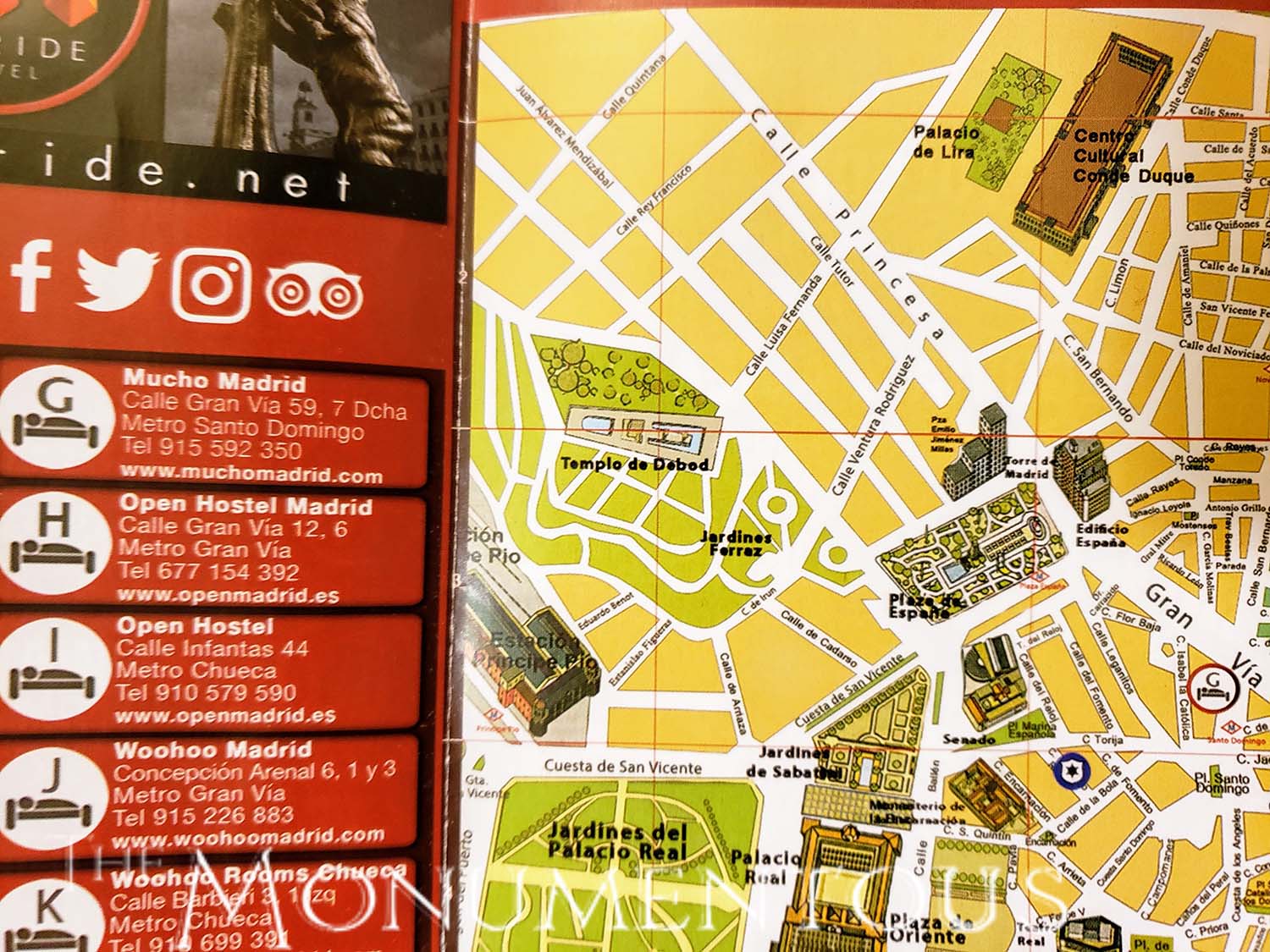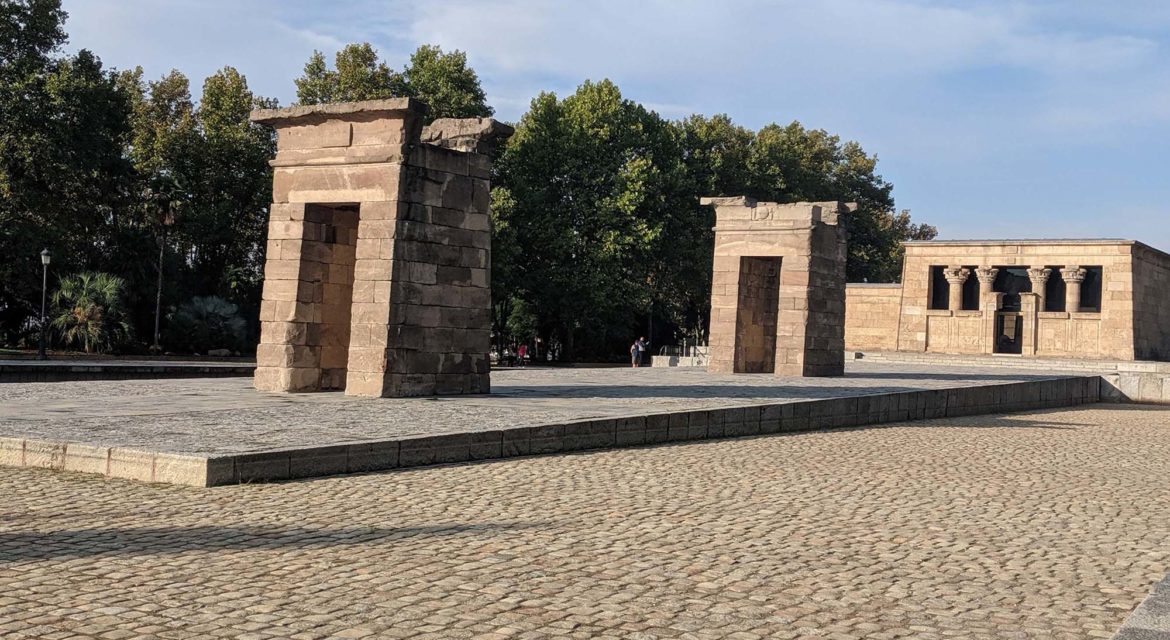 The Temple of Debod (Templo de Debod in Spanish) is an ancient Egyptian temple that was dismantled and moved to Madrid, Spain. It provides the city with an incredible connection to a genuine piece of world history that also draws hundreds of thousands of visitors every year. In doing so, it has come to showcase how monuments can create a measurable impact on their surroundings, no matter how those surroundings change and evolve over time.
The Temple of Debod (Templo de Debod in Spanish) is an ancient Egyptian temple that was dismantled and moved to Madrid, Spain. It provides the city with an incredible connection to a genuine piece of world history that also draws hundreds of thousands of visitors every year. In doing so, it has come to showcase how monuments can create a measurable impact on their surroundings, no matter how those surroundings change and evolve over time.

A Gift from Egypt
 Work the Temple of Debod began in the second century B.C. under the orders of the Meroë King Adijalamani, who built a chapel dedicated to the god Amun and the goddess Isis. Over a thousand years later, the rulers of Egypt built new rooms around the original core which made the temple bigger. A handful of emperors made more improvements after Egypt was annexed by the Roman Empire, but the site was sealed off and abandoned in the 6th century.
Work the Temple of Debod began in the second century B.C. under the orders of the Meroë King Adijalamani, who built a chapel dedicated to the god Amun and the goddess Isis. Over a thousand years later, the rulers of Egypt built new rooms around the original core which made the temple bigger. A handful of emperors made more improvements after Egypt was annexed by the Roman Empire, but the site was sealed off and abandoned in the 6th century.
Originally located about 9 miles south Aswan close to the Nile River, it was very close to the first cataract of the Nile and to the great religious center dedicated to the goddess Isis, in Philae. In modern times this location proved to be a challenge with the construction of the Aswan High Dam which put the temple and many other monuments in danger of being destroyed. UNESCO made an international call to save this rich historical legacy and Spain helped provide that help. As a sign of gratitude for the assistance the country provided in saving the temples of Abu Simbel, the Egyptian state donated the temple of Debod to Spain in 1968.
Opened to the public in 1972, the reconstruction kept the building’s original orientation and saw the creation of a hall, several chapels and a small museum inside the structure. Visitors can freely walk along the walkway during the temple opening hours.
One of just four Egyptian temples located outside of Egypt, the Temple of Debod has been able to provide residents and visitors with a sense of history that goes far beyond the surrounding area. In doing so, the temple has enabled numerous positive impacts on the entire community.

Connecting Eras and Cultures
 The Temple of Debod has become an essential element in the Parque del Oeste (English: Western Park), which has numerous other activities and attractions. There are various pieces of art and monuments inside the park and nearby that include monuments like the Fountain of Juan de Villanueva as well as the Rose Garden. There are also various areas for children to play in.
The Temple of Debod has become an essential element in the Parque del Oeste (English: Western Park), which has numerous other activities and attractions. There are various pieces of art and monuments inside the park and nearby that include monuments like the Fountain of Juan de Villanueva as well as the Rose Garden. There are also various areas for children to play in.
The site itself gives visitors an incredible view of Madrid while also being located right next to landmarks like the Royal Palace of Madrid and within walking distance of La Puerta del Sol, which contains El Oso y El Madrono (the Bear and the Strawberry Tree). This connection to the culture of the city is something that both residents and visitors can experience in different ways.
The economic impact of the Temple of Debod can also be seen in how it’s utilized by certain businesses and in how it has become an attraction listed in numerous guides and resources for visitors. By becoming a symbol that residents can identify with as well as one visitors want to connect with, the Temple of Debod has redefined the legacy of an ancient temple for a modern city.

A Legacy Transformed
 While there are certain places outside of Egypt where visitors can see complete temples like the Temple of Debod, these opportunities are incredibly limited. Like other monuments that have been relocated, the Temple of Debod illustrates what it means for an ancient legacy to be transformed to enable countless positive benefits that a modern city can utilize in numerous ways.
While there are certain places outside of Egypt where visitors can see complete temples like the Temple of Debod, these opportunities are incredibly limited. Like other monuments that have been relocated, the Temple of Debod illustrates what it means for an ancient legacy to be transformed to enable countless positive benefits that a modern city can utilize in numerous ways.

